The origin of coffee beans and the characteristics of high-quality coffee beans the characteristics of Ethiopia and Kenya
For professional baristas, please follow the coffee workshop (Wechat official account cafe_style)
Now walking into a coffee shop, you can see not only cappuccino, latte, mocha and other coffee, but also coffee from different countries. People who are in initial contact with boutique coffee know something about it, and it is easy to order.
So if you haven't come into contact with boutique coffee, how can you choose a coffee that suits you from these dazzling national place names? Let's popularize science today:
Characteristics of boutique (individual) coffee beans:
1. Boutique coffee beans must be high-quality beans with flawless beans. It should have an outstanding flavor, not "no bad taste", but "taste particularly good".
two。 Boutique coffee beans must be excellent varieties, the coffee beans produced have unique aroma and flavor, far from other tree species, but the relative yield is low. In recent years, in order to pursue the ability of disease and insect resistance and yield improvement, there are many improved tree species, such as Kenya to promote a large number of high-yield rurial11 species, but the taste and quality are greatly reduced, of course, it can not be called "boutique coffee".
3. The growth environment of boutique coffee beans also has higher requirements. Generally grow at an altitude of 1100 meters or even more than 1500 meters above sea level, with appropriate precipitation, sunshine, temperature and soil conditions. Some world-famous coffee beans also have a special geographical environment, such as the alpine clouds in the Blue Mountains, the free shade provided by Kona's "Flying Cloud" in the afternoon, and the volcanic ash soil in Antigua, which provide conditions for the growth of boutique coffee.
4. The best way to harvest high-quality coffee beans is to harvest them manually. That is, only mature coffee fruits are picked to prevent coffee fruits with inconsistent maturity from being picked at the same time. Because those unripe and overripe fruits will affect the balance and stability of coffee taste, boutique coffee needs to be picked frequently and carefully during harvest.
5. Fine coffee beans are treated in a refined way. Careful washing and sun exposure, and the processing of all kinds of delicate raw beans give the coffee a "layered", "sour", "sweet" and "sweet" flavor.
6. Boutique coffee has a strict grading system. Go through a strict grading process to ensure the uniformity of quality. And its preservation and transportation in the process of protection is very important, such as temperature and humidity control, ventilation control, avoid odor adsorption and so on, if these do not do well, then no matter how high-grade beans will no longer become fine.
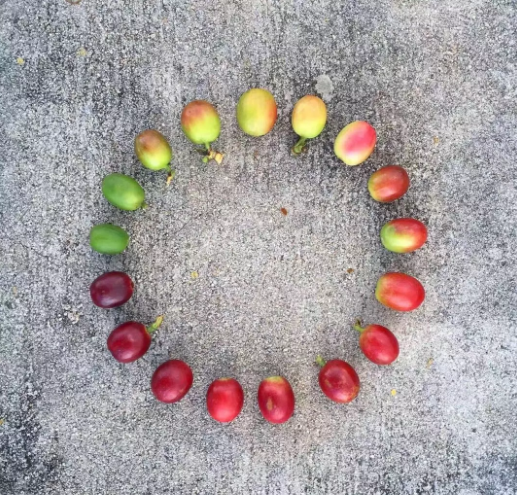
The origin of coffee beans is mainly divided into: Africa, Central and South America, Asia
Coffee trees are only suitable for growing in the tropics or subtropics, so the zone between 25 degrees north and south latitude is most suitable for coffee cultivation. This coffee-producing zone is commonly referred to as the "coffee belt" or "coffee zone." The ideal planting conditions for coffee trees are warm climates with temperatures ranging from 15 ° C to 25 ° C, and rainfall throughout the year must reach 1500mm to 2000mm, and its rainfall time should match the flowering cycle of coffee trees.
Of course, in addition to seasonal and rainfall coordination, there is also fertile soil. The best soil for coffee cultivation is fertile soil that is well drained and contains pozzolanic ash.
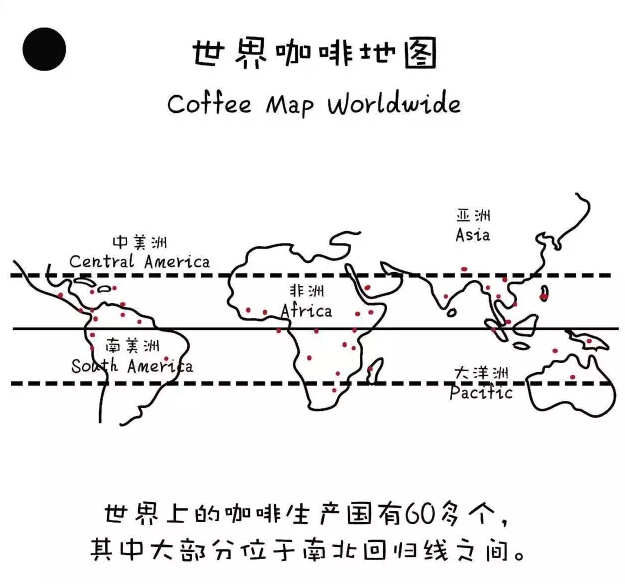
As for the ideal altitude of 1000m~2000m, it can be seen that the conditions for the cultivation of high-quality coffee are quite strict: sunlight, rainfall, soil, air temperature, as well as the way coffee beans are harvested and the production process will affect the quality of coffee itself.
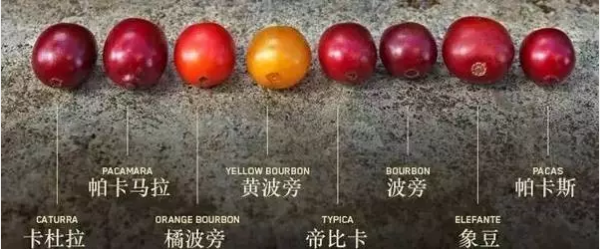
African coffee
Flavor characteristics: charming acidity
African bean flavor: Ethiopian coffee has a strong orange flavor, while Kenya coffee has strong raspberry aromas, sour aromas of black plum juice and grapefruit, and sweet sugarcane aromas. The orange aroma of Ethiopian coffee and the raspberry flavor of Kenyan coffee are the most important features of African beans, and they are also the most attractive to coffee fans.
African coffee is generally characterized by strong aroma and charming acidity, its sour brightness is lively and exhilarating, but African coffee is often slightly thin and not very sweet. African coffee due to drought and lack of water, mostly use the sun method to deal with raw beans, the bean shape is often uneven and beautiful, and the defect rate is high.
Representative:
Kenya Kenya
Kenya grows high-quality Arabica coffee beans, which absorb almost the essence of coffee cherries, with a slightly sour, thick aroma, and are very popular among Europeans, especially in Britain. Kenya Coffee surpassed Costa Rican coffee and became one of the most popular coffees.
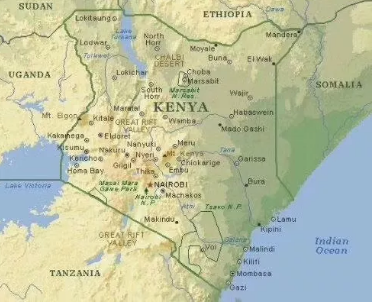
Kenyan AA coffee is the best coffee in Africa, with a thick and full texture, slightly acidic, smooth taste and slightly alcoholic aroma. AA represents the highest quality coffee beans in Kenya. Coffee cultivation in Kenya is mainly divided into two types: large farms and cooperatives. The former generally has a large planting area and has independent coffee processing facilities. Most coffee production is done by a large number of small farmers, who form coffee cooperatives. Caffeine in different producing areas has its own subtle flavor due to the difference of microclimate, with rich aroma, bright and dynamic acidity, full and elegant mellow and berry flavor as a whole.
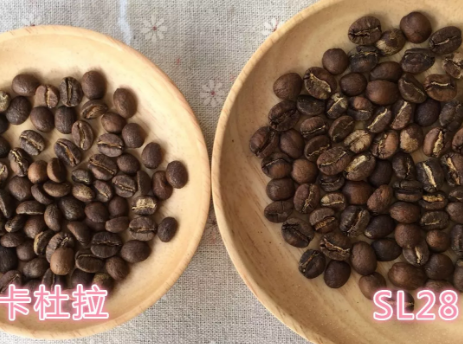
Breed: Kenya [SL28] and [SL34](Bourbon lineal), created by Scott Laboratories in 1930, abbreviated SL. Agronomists wanted to find a pest-resistant and high-yield bourbon, and they got SL28 through experiments. Kenya's high-concentration phosphoric acid soil bred Kenya beans 'special sour flavor and drank acid and charming plum fruit flavor.
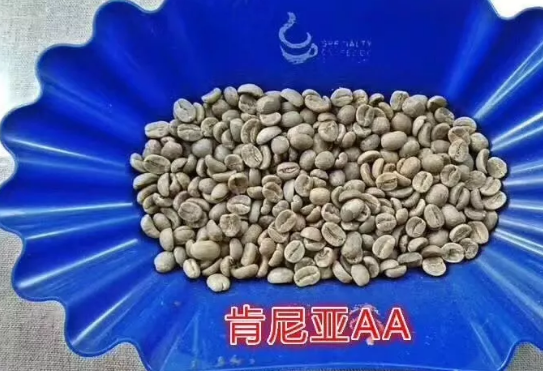
[Kenya AA] (water washing is shallow)-angular strong fruit acid, and this Kenya, let me feel gentle, like facing the sea, the feeling of breeze blowing. Unlike Kenya, which used to be berry-based, this time it has a delicate red wine with sour fruit, cherry sweetness, BlackBerry lips and teeth, and a tail of black plum and sugar. Ice droplets are nice!
Ethiopia
Ethiopia is an agricultural country with a history and tradition of coffee origin. Yega Chuefei is one of the producing areas south of Sidamo, with about 12 million people engaged in coffee production and is a major exporter of Arabica coffee beans in Africa. The high-quality coffee here is of excellent quality and is worth looking for. It has a soft taste, with wild flavor of wine, and slightly sour taste, unforgettable after drinking.
Why are Ethiopian coffee beans always big and small? Why are Essel's coffee beans always big and small? Is there any difference in taste? | Coffee workshop study room
If you are very fond of African beans, it should be easy to find that Ethiopian beans are generally of different sizes and have significantly lower evenness than those in Kenya. Whether it is Yega Xuefei or Sidamo, whether it is washing or sunlight, sometimes the same batch of coffee beans can be seen to be significantly different in baking color and particle size. Nearly 2000 coffee varieties have been recorded in Ethiopia, including 1927 native varieties and 128 imported varieties. So just by looking at the appearance, Esther's coffee variety is "Grand View Garden", which has everything, long, short, thin, fat.
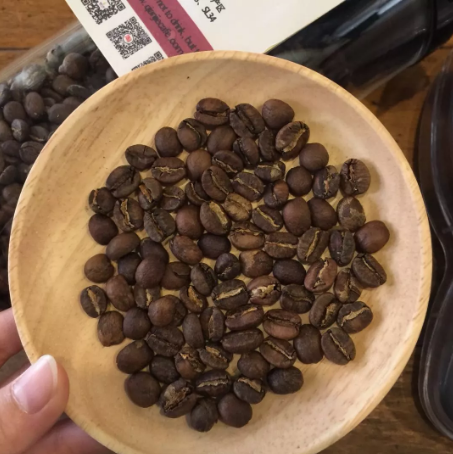
Yejaschuffe itself is a small town of about 20, 000 people, and the three neighboring producing areas, Wenago, Kochere and Gelena Abaya, are also classified as Yejasuffe because they produce coffee with almost the same flavor as Yejasuffe. Yejacheffe is similar to the neighboring Sidamo in terms of culture and geography, but it seems to be more favored to enjoy the advantageous conditions, top-quality Yega Chefe coffee with floral aromas, bright citrus acidity, lemon flavours and silky taste.
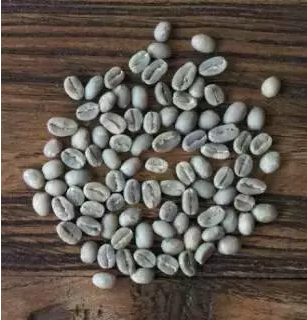
[the difference between washing and sunbathing Yega Xuefei]
Raw beans: generally, washed raw beans are turquoise, and sun-washed raw beans are yellowish green.
Cooked beans: there is more silver skin washed in water and less in the sun.
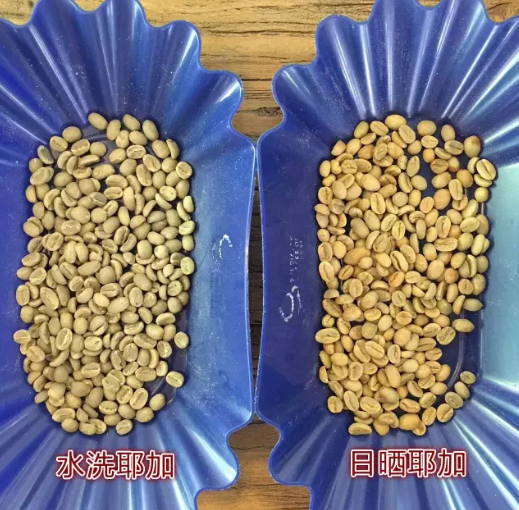
[Yechuefi aricha, Ethiopia] (light sun baking)-light fermented wine, sweet orange, spices, honey sweet, Aricha processing plant sun Ariga is the highest grade of G1 by ECX, from raw bean appearance, consistency, freshness to dry aroma and flavor are excellent.

[Yega Sherphine Woka, Ethiopia] (slightly roasted with water)-lemon, kumquat and white grape juice, the Waka Cooperative joins the famous Yejia Sheffield Coffee Farmers Cooperative Union to produce quality water washing Ethiopia can reach the highest level of G1.
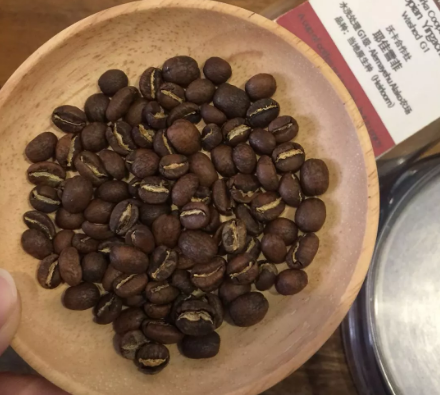
Sidamo
Sidamo grows in the southernmost Ethiopian plateau between 4600 and 7200 feet above sea level (Sidamo province). It is a famous boutique coffee area in southern Ethiopia, bordering Kenya, southeast of Gemma, just south of the capital, usually sweet and loved by most people. its annual output is about 225000 bags / 60kg, with small beans, gray in green, and sun drying in Sidamo. Coffee is placed in hemp net wooden frame, workers take turns in the sun exposure, manual stirring coffee, sun Sidamo is usually marked with G4 exit, washing Sidamo because the treatment process is more perfect, so most of them are exported at G2 level.
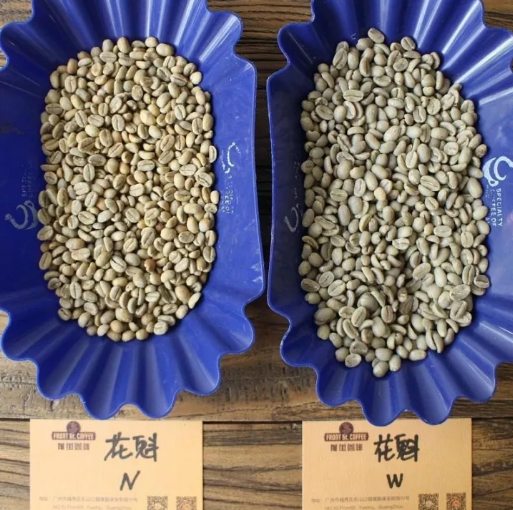
Natural solarization (African drying bed):
Spread the coffee fruit directly on the cement floor or on the drying rack in order to make the coffee dry and easy to preserve. It usually depends on the weather, and the drying time is about 2-4 weeks.
Coffee usually used for commercial purposes will be dried on the cement floor. Keep rolling the coffee fruit in time so that the back of the coffee is heated evenly, which is good for drying, and at the same time, it also avoids mildew caused by the bottom touching the ground for too long.
Hand-selected fruits and coffee beans used to make boutique products are treated in the sun with African Bed (African drying bed). Coffee fruits are sunbathed on transparent beds with mesh, and the thickness of the shelves varies according to local conditions.
[Sidamo Lion King] (slightly baked in the sun)-rich aromas of berries, flowers, grapes, a variety of tropical fruits, obvious floral, lemon and citrus flavors, lime-like acidity, peach aromas when cold
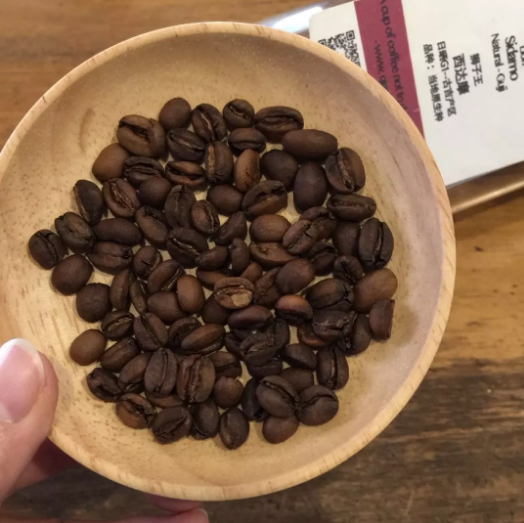
Central and South America
Characteristics of taste: balanced, moderate acidity and mellow taste
The flavor of Central and South American beans: generally speaking, the flavor is relatively regular. The Brazilian coffee is soft and sweet, while the Costa Rican coffee is gentle and supple, with a blend of sour, sweet and chocolate aromas.
The overall flavor of Latin American coffee is famous for its balance, and all the flavors in Latin American coffee can be found in Latin American coffee. The widespread use of wet treatment of raw beans is also one of the characteristics of Latin American coffee, good processing also makes its beans larger and more uniform than African coffee, and the defect rate is lower.
[representative]:
Colombia
Colombia is one of the largest producers of high-quality coffee in the world, a bright pearl in the world coffee map and a coffee land blessed by God. Arabica coffee is grown on steep slopes 800 to 1900 meters above sea level and is hand-picked and washed.
Colombian coffee has a balanced flavor and a smooth taste, just like a gentleman in coffee. He has a wide range of producing areas, such as Medellin, Armenia and Manizales, which are commonly referred to as "MAM".
Colombia's boutique bean producing areas are mainly in the south, more than 1500 meters above sea level, including San Augustin, Huila in Huilan province, Popayan, Cauca in Cauca province, Nari ñ o province, and Tolima province, all of which have delicate sour and raspberry aromas, caramel aromas and full sweetness.
[Cauca Cauca] is a certified coffee producing area in Colombia, with an average altitude of 1758m-2100m. 80% of Cauca province is mountainous. The soil in the producing area has adequate nutrition for coffee growth. Low temperature at night and relatively high altitude slow down the growth of coffee. Coffee in Cauca producing areas has high acidity and commendable sweetness.
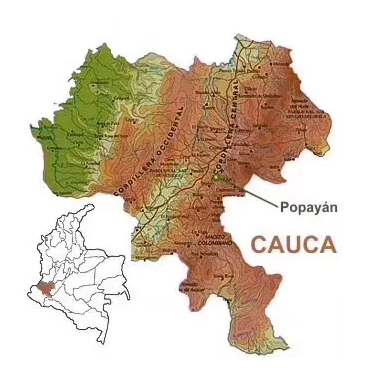
[Colombia] (deep roasting in washing)-sucrose, clean, medium mellow thickness, the coffee is treated in the traditional way: the coffee cherries are picked by hand, and then the coffee fruits are washed with traditional water treatment. The treated coffee beans are placed in a scaffolding to dry in the sun. We use medium-baked beans with mild plum acidity and well-balanced nuts, caramel and clean taste.
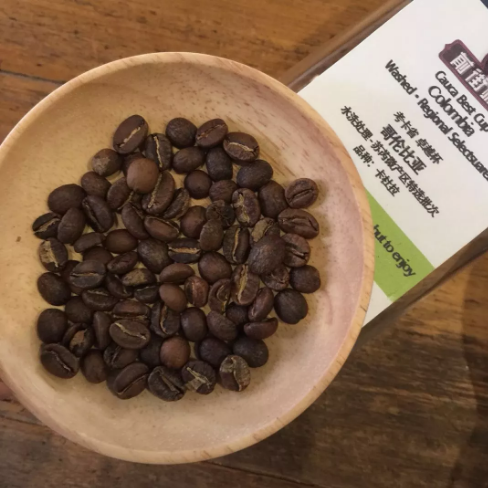
El Salvador
Salvadoran coffee is also of high quality and unique flavor: balanced, fresh and lively, mild taste, sweet and pleasant, can be described as "pure natural flavor". This is due to the fertile soil, suitable altitude, good climate, planting techniques passed down from generation to generation and excellent tree species.

[El Pacamara] (moderately roasted with water)-nut chocolate, passion fruit, cream, strawberries, the national average is high above sea level, such a geographical environment is very conducive to the growth of coffee, farmers use the traditional way of planting: almost 100% shade planting. Pacamara is the artificial breeding variety of Pacas and Maragogipe, and Pacamara is a rare excellent variety under artificial breeding.
Maragogype elephant bean: a mutant of Typica, first discovered in Brazil in 1870. The fruit is large, long and a little twisted, and the plant has long internodes and large leaves. The output is relatively low.
Pacas Pacas: the bourbon variety found in El Salvador. In 1935, the Salvadoran coffee farmer "Don Alberto Pacas" selected a high-production San Ramon bourbon variety to be planted on a farm. In 1956, his coffee tree produced more fruit than the same kind of coffee tree. Professor "Dr. William Cogwill" of the University of Florida identified this as a genetic mutation in bourbon and named it "Pacas". Pacas is very popular in China and the United States because of its high output and good quality.
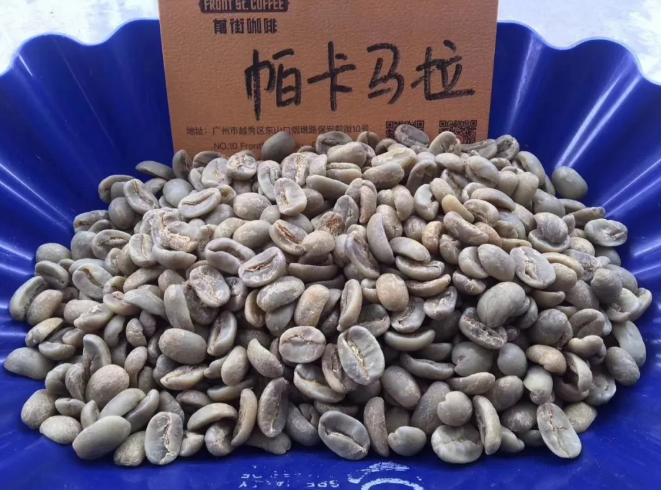
Guatemala
The characteristics of ● taste: bitter and fragrant, good taste.
Guatemala is a coffee producing area that can not be ignored and is a typical representative of coffee flavor diversity. SHB (hardest bean) in Guatemala is almost a well-known synonym for high-quality coffee. This is because there are more than 300 kinds of microclimate, high mountains, Pacific Ocean, Atlantic Ocean, huge volcanic lake, Mexican plain. And rich geographical and climatic resources.
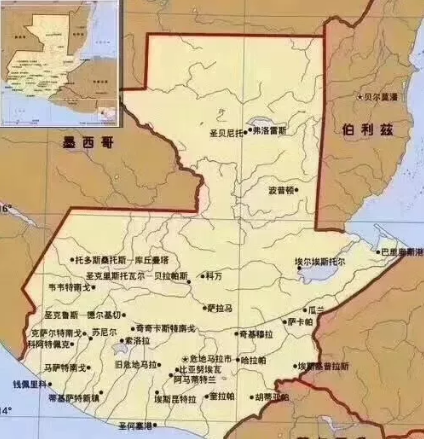
Slightly sour, mellow and smooth, it is the best material for mixed coffee. The classification is divided into seven grades according to the elevation. The higher the origin, the more mellow the coffee beans are, while the coffee beans from the lower areas are of lower quality.
Altitude level: like many other Central American countries, Guatemala has its own altitude level for coffee growth. The higher the altitude, the slower the growth and maturity. Therefore, the higher the density of raw beans, the higher the quality.
Prime: 750m ~ 900m above sea level
Extra Prime: 900m ~ 1050 m above sea level
Semi Hard Bean: plant 1050 m ~ 1220 m above sea level
Hard Bean (HB): 1220 m ~ 1300 m above sea level
Strictly Hard Bean (SHB): planted more than 1300 meters above sea level
[Guatemala]-the nutrient-rich pozzolanic soil, high altitude and relatively low average temperature give the coffee here a clean sweet taste and bright acidity. The soil of Atitlan is rich in organic matter, and what impresses me most is the juicy taste of longan, which is very soft and smooth, which is very different from the smoky taste of Guatemala.
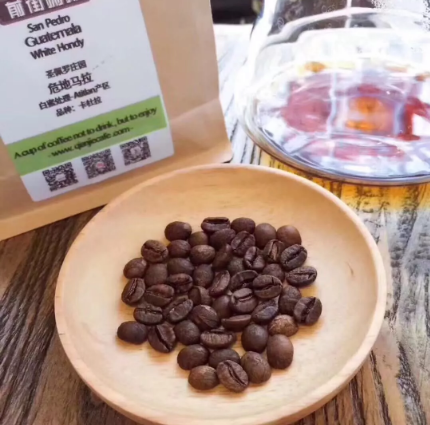
Bolivia
The unique tropical rain forest environment in some parts of Bolivia provides excellent natural conditions for the growth of organic coffee. The aroma of Bolivian coffee is rich and unique, both after the bean is ground and the aroma of the coffee is quite rich, similar to the mixture of flower and fruit aromas, the perfect nutty flavor is impressive.
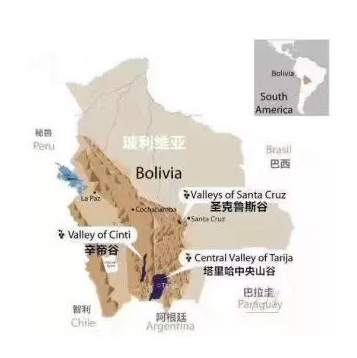
[Lake Titicaca, Bolivia] (moderately roasted in water)-dry aromas of roasted nuts and almonds, soft acidity of oranges and white grapefruit on the palate, sweet caramel as a whole, smooth texture of nut milk, cleanliness and balance, and attractive herbal aromas.
Variety: iron pickup, one of the oldest native varieties, all Arabica are derived from Tibica. The top leaf of Tiebika is bronzed and the bean body is oval or thin in shape; the flavor is elegant, but the physique is weak, the disease resistance is poor and the fruit yield is less. Excellent manor beans such as the Blue Mountains of Jamaica, Manning of Sumatra and Kona of Hawaii all belong to Tibika.
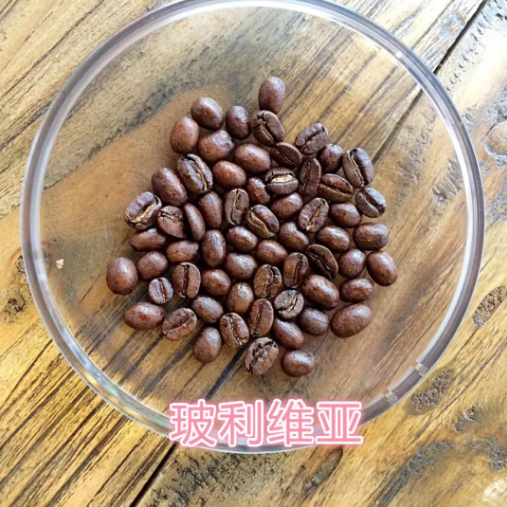
Panama
Panamanian caffeine is famous in the world, and the reason is that it is closely related to Panama's unique physical and geographical conditions. An important reason for the unique quality of Panamanian coffee is its microclimate. Bordering Costa Rica and Colombia, Panama's east-west environment allows cold air to flow through the Central Mountains at more than 6500 feet, creating a very unique microclimate in the Boquete and Vol á n Candela regions, making it a major producer of Panamanian coffee. The land around this area is rich in nutrients, and these fertile soils provide perfect conditions for the growth of coffee, creating a large number of unique, high-quality coffee.
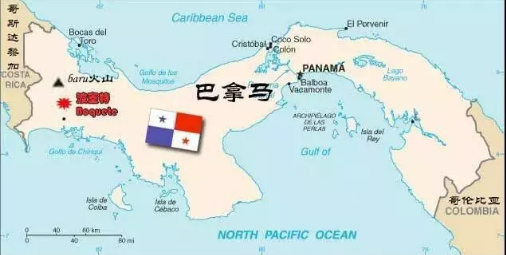
[Boquete Pocket] this is the Panamanian region we are most familiar with. The special mountainous terrain of this area forms a microclimate which is very suitable for growing coffee. Varieties: Tibica, Kaddura, Kaduai, bourbon, Rose Summer, [Flower Butterfly] contains 40% roses in summer, a bean with high performance-to-price ratio, classic rose and fruit flavor, moderate curry body, smooth taste, delicate acidity, well-balanced taste, coupled with subtle flavors such as caramel, chocolate, citrus and jasmine.
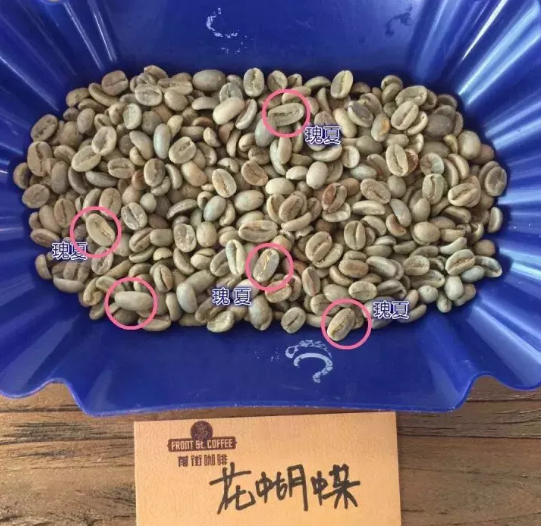
Costa Rica
The coffee beans produced at the high latitudes of Costa Rica are famous in the world, full-bodied, mild in taste, but extremely sour. The coffee beans here have been carefully processed, which is why they have high quality coffee. Located in the south of SanJos é, the capital of Tarasu, Costa Rica is one of the most valued coffee growers in the country. There are eight Costa Rican producing areas, of which Tarazu, the Central Valley and the Western Valley are recognized as the three best producing areas. [Las Lajas] (Las Lajas) is located in the foothills of Sabanilla de Alajuela and Poas Volcano in the Central Valley.
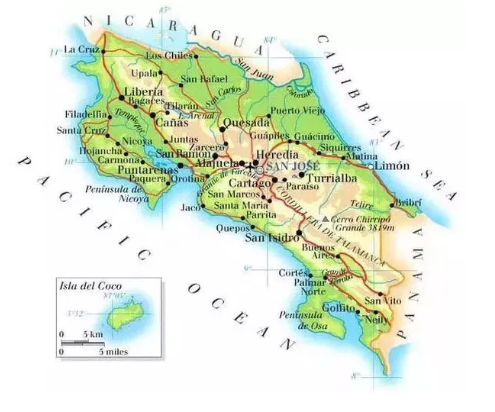
[Tacanette Manor, Costa Rica] (deep baking in washing)-soft orange notes, toast, caramel cocoa sweet, Carnett Manor, located in Costa Rica's highest Tarrazu coffee growing area, this area is the most intensive fruit growing area in Costa Rica. The owner of the manor mainly grows passion fruit, while the amount of coffee is very small, only in a special area.
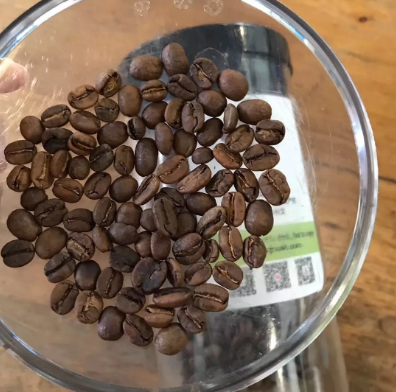
[Raisin Honey Process]: Raisin processing method, first the coffee fruit into a state of raisins, then peel honey processing fermentation, fermentation flavor will be more intense, and pectin preservation is higher than other honey processing, known as 100% pectin honey processing really has raisin flavor. This is a very sweet treatment, with the taste of white wine and balanced acidity, the fermentation flavor will be more intense, and pectin preservation is higher than other honey treatment, a bit like "noble rot wine" sweet wine, honey, preserved apricots, raisins, peaches and other flavors
Asia coffee
Taste characteristics: deep flavor and strong taste
Asian beans and island flavor: more full-bodied than Central and South American beans and African beans, but less sour, flavor slightly heavy wood, herbs, spices and earthy, low smoky aroma than the rising acid aroma. Island beans are light and mild, with a light and elegant tone.
When it comes to Asian coffee, coffee lovers 'first impression is often thick and steady. Because of the heavy weight of Asian coffee, it is very suitable as a base for making Italian coffee blends. Asian green coffee beans are generally processed by wet or semi-wet processing. Most of the green beans are uniform, but the color of the beans after semi-wet processing is darker. Asian coffee is generally characterized by a heavy flavor, intense sweetness and roundness, but the aroma and brightness are slightly flat.
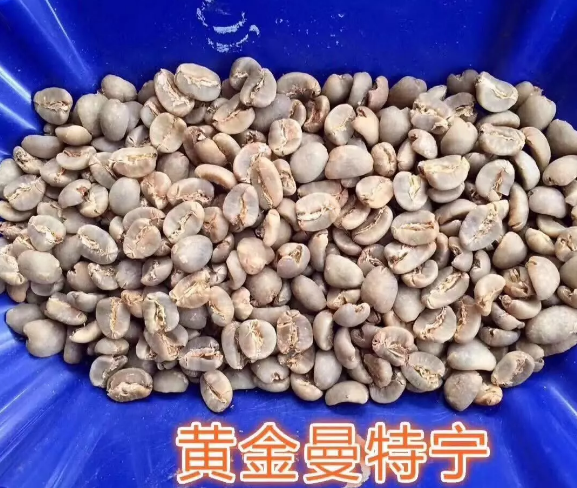
Indonesia
Coffee cultivation in Mantenin, Sumatra, began in the 18th century, when it was planted near Aceh province on the north side of Lake Tawar. For a few days, most of the Sumatran coffee area is located in the south of Lindong, Subu and Takengon coffee. Because there is little difference between planting areas, Sumatran coffee does not use the producing area as the distinguishing standard, but the way of picking and handling has a great influence on the flavor of Sumatra coffee. The famous "Golden Manning" is an excellent product after the Japanese strictly control these procedures.
Mantenin is one of the most suitable coffee beans for deep roasting in the world. One of the famous reasons is that its own characteristics do not disappear after deep roasting. Its thick flavor and low acidity, coupled with its thick taste like traditional Chinese medicine, make it very popular in Asia. In fact, the high quality Mantenin is also very suitable for medium and shallow baking. In this degree of baking can show a good fruit flavor.
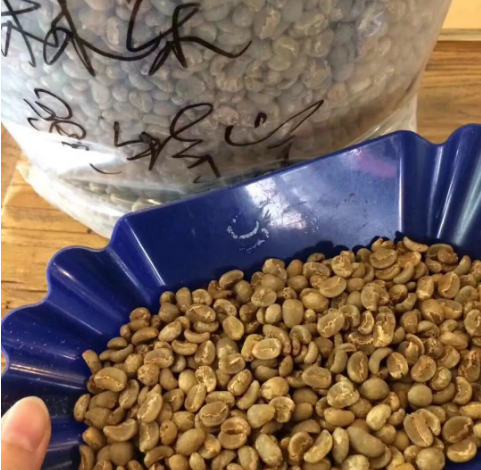
[Mantenin, Sumatra, Indonesia] (deep baking in traditional wet planing)-baked toast, nuts, pine, caramel, herbs, Lake dopa in Sumatra Province and Lake Tawa in Aceh all produce manning coffee. This is the famous "two lakes Shuangman".
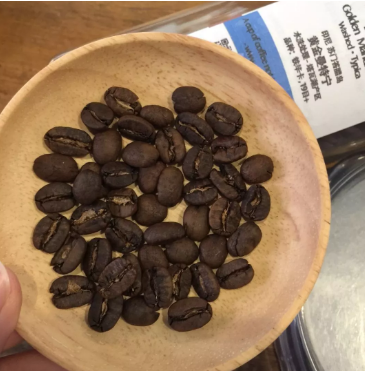
The aroma of Golden Manning Coffee is rich and full-bodied, with clear high-quality acidity, high balance, and sometimes nutty flavor. In terms of appearance and quality, Java coffee is excellent, just like a woman's vaguely charming, charming and just right, memorable.
Papua New Guinea
Papua New Guinea is an anomaly in Indonesian coffee. Coffee estates are numerous, large and small in scale, and most of the small estates produce washed organic beans with strong flavor but no local flavor. These small estates also produce a small amount of sun beans, which are more varied and delicate than water-washed beans; the taste of large manor coffee is more clean and delicate, but some people think that it has less personality. Basically, Babu coffee is lighter than java beans, somewhat similar to good Central American beans. Most of the coffee trees in the area come from the Tibica seed of the Jamaican Arabica bean, mixed with the Arabica bean from Tanzania.
[Papua New Guinea Bird of Paradise] (moderately baked in water)-nuts, sugar, low acid and solid, is from Papua New Guinea, Oceania, famous farm Sigri Estate, beautiful national bird of Papua New Guinea on sacks, Paradise Bird, known as "Little Blue Mountain", [tin card] species, balanced and full-bodied, overall balanced, elegant, clean and smooth, nuts with fruit aroma
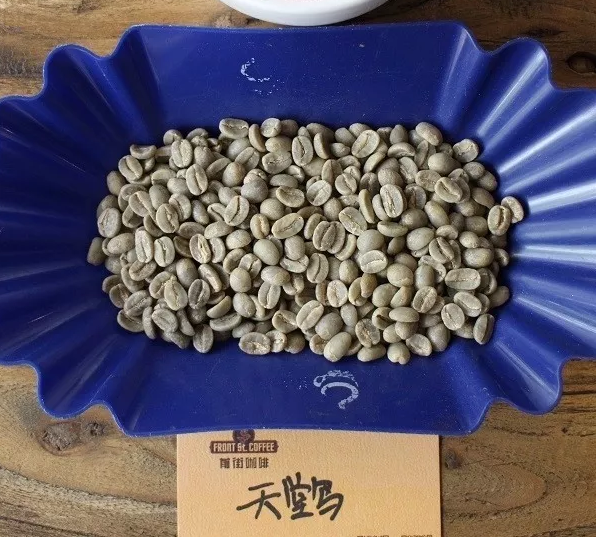
Yunnan
Small-grain coffee is suitable for growing in the mountains at an altitude of 800 to 1800 meters. If the altitude is too high, it will taste sour, and if it is too low, it will taste bitter. Small grains of coffee are mostly planted in dry and hot valleys about 1100 meters above sea level, so they are moderately sour, rich and mellow. There is a unique environment suitable for the growth of small seed coffee in many areas of Yunnan, and the quality of small seed coffee is excellent.
The planting areas are mainly distributed in Lincang, Baoshan, Simao, Xishuangbanna, Dehong and other states. The average temperature of Baoshan is 21.5℃, and the highest is 40.4℃, which is basically frost-free all the year round. It is recognized as the best producing area of small-grain coffee. The small-grain coffee cultivated here is famous at home and abroad for its strong but not bitter, fragrant but not strong, well-proportioned small noodles, mellow and fruity. International Coffee Organization tasting experts evaluate Yunnan coffee as the highest quality coffee in the world, such as Colombian wet-processed small-grain coffee.
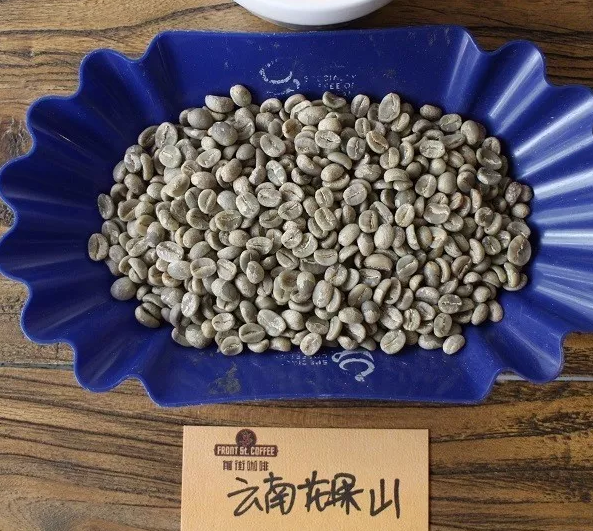
Palate: Soft on the palate, Asian herb aroma, lively and bright acidity, cheeks salivation, sour softness, mellow balance, rich layers, aftertaste dark chocolate, honey, sucrose flavor obvious, completely cooled, brown sugar flavor.
Coffee bean purchasing technology, how to buy roasted beans?
1. What kind of coffee machine is used to brew coffee. To make coffee, first you have to have a coffee maker, or coffee pot…
It is best to tell the clerk which coffee brewing method you are using. In this way, the clerk can recommend the right coffee beans for you. In addition, perhaps you can also communicate with the staff about the experience of using it.
2. The coffee you like.
Describe to the clerk what flavor of coffee you like. There is no need to be professional like a professional coffee reviewer. Relax, for example, drink a little stronger or sour. In this way, the clerk can recommend the most suitable coffee according to the taste characteristics of his own coffee.
3. Know the flavor of coffee beans before buying
Although the coffee beans themselves will have obvious geographical characteristics, but in the roasting process, roasters may adjust according to their own understanding of coffee taste, the final taste, the same coffee can present a variety of appearances. Before you buy coffee, understand the flavor of coffee beans, perhaps so you can understand why the same coffee beans bought in different places taste different.
4. Learn to ask the roasting date of coffee beans.
As a food, coffee beans naturally have indicators such as "shelf life". Coffee beans are similar to seafood, the fresher the better. The index of freshness is "roasting date", and it is recommended to buy coffee beans with roasting date less than two weeks. Because different coffee beans, different roasting degrees will affect the drinking period. For example, in the dark roast coffee beans, because the smoke and fire smell is heavier, it is best to wait for seven days before drinking, and the best flavor is in two weeks; light roast coffee beans are two or three days after baking can be drunk, the best flavor is in a week, you can drink the flavor of the beans, both are best in a month to drink. After buying home, you can use a strange pen to write the date of baking beans on the package, which can help you understand the freshness of beans.
However, many people will say that they feel good when they try it on the spot, but they don't taste good when they buy it at home. There should be several reasons for the impact, one is the household bean grinder and commercial bean grinder particle homogeneity is different, especially the difference between manual and electric bean grinder, manual can not come out of the electric uniformity and thickness; In addition, some coffee shops may choose water quality relatively better than household water quality; Third, the material, Italian coffee machine different price models pressure index and stability index are not the same, these will affect, such as hand coffee, filter cup material, hand pot material... And so on.
5. Buy coffee whole beans
Basically, the store will provide free coffee grinding service, that is, it can help guests grind coffee beans into coffee powder for free. If you want to fully enjoy the aroma of a cup of coffee, it is recommended to buy coffee whole beans, WholeBean.
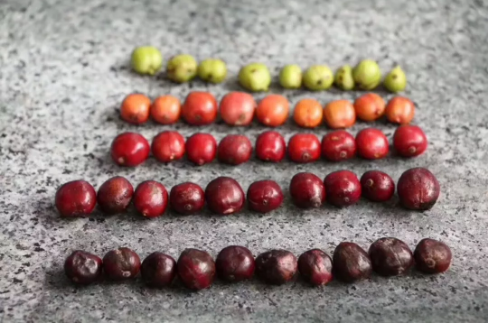
Important Notice :
前街咖啡 FrontStreet Coffee has moved to new addredd:
FrontStreet Coffee Address: 315,Donghua East Road,GuangZhou
Tel:020 38364473
- Prev

Professional boutique coffee training | understand the flavor characteristics of fine coffee beans in Africa, America and Asia
Professional baristas follow the Coffee Workshop (official Wechat account cafe_style) now walking into a coffee shop, you can see not only cappuccino, latte, mocha and other coffee, but also coffee from different place names of different countries. People who are in initial contact with boutique coffee know something about it, and it is easy to order. So how do you learn from these who haven't come into contact with boutique coffee?
- Next

Which kind of coffee beans have a strong chocolate flavor? why Italian concentrate is often used in medium and deep baking.
Professional barista communication please follow the coffee workshop (Wechat official account cafe_style) have you ever experienced the taste of chocolate coffee? Coffee beans may be felt in various flavors depending on the production area and the degree of baking. Today I will introduce the taste of chocolate in coffee. About the taste of chocolate in coffee, the taste of chocolate in coffee is that when you drink coffee, you feel
Related
- Beginners will see the "Coffee pull flower" guide!
- What is the difference between ice blog purified milk and ordinary milk coffee?
- Why is the Philippines the largest producer of crops in Liberia?
- For coffee extraction, should the fine powder be retained?
- How does extracted espresso fill pressed powder? How much strength does it take to press the powder?
- How to make jasmine cold extract coffee? Is the jasmine + latte good?
- Will this little toy really make the coffee taste better? How does Lily Drip affect coffee extraction?
- Will the action of slapping the filter cup also affect coffee extraction?
- What's the difference between powder-to-water ratio and powder-to-liquid ratio?
- What is the Ethiopian local species? What does it have to do with Heirloom native species?

